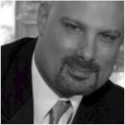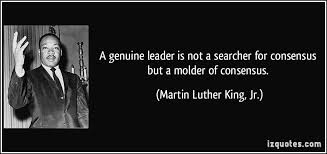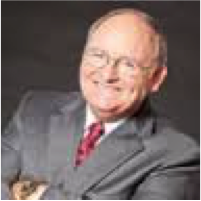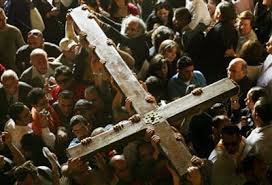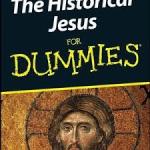 The Act of “Consensus” – Part IV
The Act of “Consensus” – Part IV
 The decision making process or consensus became common among first century believers in the governing of this newly born Church. Dr. Tim Hartnett outlined in his article “The Basics of Consensus Decision-Making” (www.GroupFacilitation.net) the common elements that are definitive of consensus decision making. These include:
The decision making process or consensus became common among first century believers in the governing of this newly born Church. Dr. Tim Hartnett outlined in his article “The Basics of Consensus Decision-Making” (www.GroupFacilitation.net) the common elements that are definitive of consensus decision making. These include:
 Inclusive: As many stakeholders as possible are involved in group discussions.
Inclusive: As many stakeholders as possible are involved in group discussions.
Participatory: All participants are allowed a chance to contribute to the discussion.
Collaborative: The group constructs proposals with input from all interested group members. Any individual authorship of a proposal is subsumed as the group modifies it to include the concerns of all group members.
Agreement Seeking: The goal is to generate as much agreement as possible. Regardless of how much agreement is required to finalize a decision, a group using a consensus process makes a concerted attempt to reach full agreement.
Cooperative: Participants are encouraged to keep the good of the whole group in mind. Each individual’s preferences should be voiced so that the group can incorporate all concerns into an emerging proposal. Individual preferences should not, however, obstructively impede the progress of the group.
Acts 15 records such a proceeding in the early Church over the question of following the Jewish tradition of circumcision in this new group of believers, particularly among the newly converted gentiles. A couple of hundred years later the Church would send its top brass, regional Bishops, to preside over a council to draft position papers on a controversial subject, debate with persuasion over the matter, and expel the opposition after an edict was passed. The hierarchal leaders in the power struggle would maintain direction and order. Any opposition would appear as heresy, but that was not the case at this first Church council held in Jerusalem. Let’s examine how the common elements that are definitive to consensus decision making were used.
Background: (Acts 15:1-3)
Some men came down from Judea and began teaching the brethren, “Unless you are circumcised according to the custom of Moses, you cannot be saved.” When Paul and Barnabas had great dissension and debate with them, the brethren determined that Paul and Barnabas and some others of them should go up to Jerusalem to the apostles and elders concerning this issue. Therefore, being sent on their way by the church, they were passing through both Phoenicia and Samaria describing in detail the conversion of the Gentiles, and were bringing great joy to all the brethren.
Inclusive: As many stakeholders as possible are involved in group discussions.
(Acts 15:2) ….. the brethren determined that Paul and Barnabas and some others of them should go up to Jerusalem…..
(Acts 15:4) When they arrived at Jerusalem, they were received by the church and the apostles and the elders.
This new “Believers in Jesus” movement had originated as predominately a Jewish movement, most believers living in the Jerusalem area after Pentecost. Like today, the “traditionalist”, those of Pharisee background, (the ‘Word’ faction of the 1st Century Church) wanted to be doctrinally heard. Those who had seen the transforming power of this gospel, (the ‘Spirit’ faction who had ‘experienced’ the power of the Holy Spirit even among the gentiles) wanted to present their defense. Both factions, who were hotly sincere about their convictions, wanted the whole church of their time to come on a consensus to settle the dispute. Recognized leadership through the apostles and respectful wisdom from older, mature Christians, the elders, also participated.
Participatory: All participants are allowed a chance to contribute to the discussion. We hear from the concerned, critical “Word/Holiness” faction led by Pharisaical brethren which produced debate; the “Traditional/Historical” perspective from Peter, the Apostle, produced silence; the experiential testimonies of the “Spirit/Pentecostal” faction were led by Paul and Barnabas; and the “Scriptural” perspective from James, the brother of Jesus, an elder were shared\ before the group could come to a consensus on the issue.
Collaborative: The group constructs proposals with input from all interested group members. Any individual authorship of a proposal is subsumed as the group modifies it to include the concerns of all group members.
- Word/Holiness Faction (led by Pharisees): (Acts 15:5) But some of the sect of the Pharisees who had believed stood up, saying, “It is necessary to circumcise them and to direct them to observe the Law of Moses.”
- Traditional/Historical Faction (led by Peter): (Acts 15:7-12) After there had been much debate, Peter stood up and said to them, “Brethren, you know that in the early days God made a choice among you, that by my mouth the Gentiles would hear the word of the gospel and believe. God, who knows the heart, testified to them giving them the Holy Spirit, just as He also did to us, and He made no distinction between us and them, cleansing their hears by faith. Now therefore why do you put God to the test by placing upon the neck of the disciples a yoke which neither our fathers nor we have been able to bear? But we believe that we are saved through the grace of the Lord Jesus, in the same way as they also are.”
- Spirit/Pentecostal Faction (led by Barnabas and Paul): (Acts 15:12) All the people kept silent, and they were listening to Barnabas and Paul as they were relating what signs and wonders God had done through them among the Gentiles.
- Scriptural Faction (led by James): (Acts 15:13-18) After they had stopped speaking, James answered saying, “Brethren, listen to me. Simeon has related how God first concerned Himself about taking from among the Gentiles a people for His name. With this the words of the Prophets agree, just as it is written ‘After these things, I will return, and I will rebuild the tabernacle of David which has fallen, and I will rebuild its ruins, and I will restore it, so that the rest of mankind may seek the Lord, and all the Gentiles who are called by My name,’ says the Lord, who makes these things known from long ago.”
Agreement Seeking: The goal is to generate as much agreement as possible. Regardless of how much agreement is required to finalize a decision, a group using a consensus process makes a concerted attempt to reach full agreement.
James throws out a proposal that shows that everyone’s voice has been heard. No view is totally rejected, nor totally accepted, nor is a compromise established to gain political influence. James suggests, (Acts 15:19-21) Therefore it is my judgment that we do not trouble those who are turning to God from among the Gentiles, but that we write to them that they abstain from things contaminated by idols, and from fornication and from what is strangled and from blood. For Moses from ancient generations has in every city those who preach him, since he is read in the synagogues every Sabbath.”
Cooperative: Participants are encouraged to keep the good of the whole group in mind. Each individual’s preferences should be voiced so that the group can incorporate all concerns into an emerging proposal. Individual preferences should not, however, obstructively impede the progress of the group.
(Acts 15:22-31) Then it seemed good to the apostles and the elders, with the whole church, to choose men from among them to send to Antioch with Paul and Barnabas – Judas called Barsabbas, and Silas, leading men among the brethren, and they sent this letter by them,
The apostles and the brethren who are elders, to the brethren in Antioch and Syria and Cilicia who are from the Gentiles, greetings. Since we have heard that some of our number to whom we gave no instruction have disturbed you with their words, unsettling your souls, it seems good for us, having become of one mind, to select men to send to you with our beloved Barnabas and Paul, men who have risked their lives for the name of the Lord Jesus Christ. Therefore we have sent Judas and Silas, who themselves are also report the same things by word of mouth. For it seemed good to the Holy Spirit and to us to lay upon you no greater burden than these essentials:
That you abstain from things sacrificed to idols and from blood and from things strangled and from fornication; if you keep yourself free from these such things, you will do well. Farewell.
So when they were sent away, they went down to Antioch; and having gathered the congregation together, they delivered the letter. When they had read it, they rejoiced because of its encouragement.
 Agreement was reached through consensus. It was not decided by vote, or majority rule, nor dictatorial decree from leadership, but through a consensus of agreement among all present. All voices had been heard; all voices were given credence, and the Holy Spirit brought the group to a consensus, and understanding, a direction which all could proceed forward. Everyone left proclaiming the same message which brought encouragement, not division. There were no church splits, no continual feuds, not criticisms about what happened, but everyone left “in one mind”, “in one accord”. The Church has not been able to reproduce this astounding accomplishment over the centuries as it established a hierarchal pyramid of leadership structure that began to dictated doctrine, decree, and dogma. With the clergy/laity divide the voices of the common believer, the laity would be silenced or ignored. Opposition would be looked upon as heresy, and its advocates shunned or ex-communicated from the church, and the church would be baptized into what would be known as the Dark Ages of history.
Agreement was reached through consensus. It was not decided by vote, or majority rule, nor dictatorial decree from leadership, but through a consensus of agreement among all present. All voices had been heard; all voices were given credence, and the Holy Spirit brought the group to a consensus, and understanding, a direction which all could proceed forward. Everyone left proclaiming the same message which brought encouragement, not division. There were no church splits, no continual feuds, not criticisms about what happened, but everyone left “in one mind”, “in one accord”. The Church has not been able to reproduce this astounding accomplishment over the centuries as it established a hierarchal pyramid of leadership structure that began to dictated doctrine, decree, and dogma. With the clergy/laity divide the voices of the common believer, the laity would be silenced or ignored. Opposition would be looked upon as heresy, and its advocates shunned or ex-communicated from the church, and the church would be baptized into what would be known as the Dark Ages of history.
 The Act of “Consensus” – Part VI
The Act of “Consensus” – Part VI With all the splits, all the sects, all the denominations, all the church offices, all the different giftings, etc., with all this diversity in the body of Christ, how can consensus be found in the 21st Century Church structure? How can consensus be the norm of church governing?
With all the splits, all the sects, all the denominations, all the church offices, all the different giftings, etc., with all this diversity in the body of Christ, how can consensus be found in the 21st Century Church structure? How can consensus be the norm of church governing? 